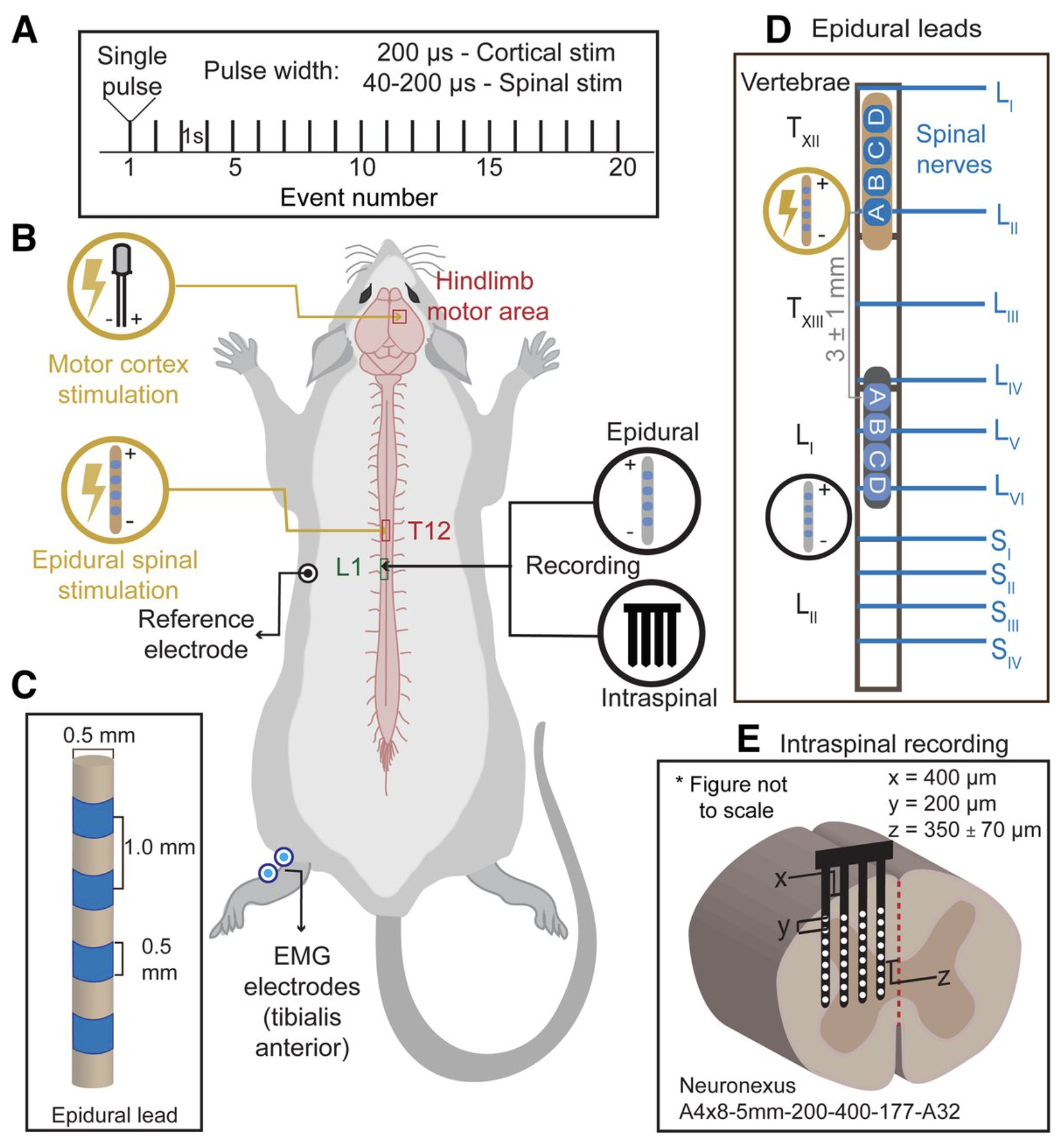New publication: Evoked Synaptic Activity Potentials (ESAPs) elicited by SCS
eNeuro 2023 Apr 27;ENEURO.0429-22.2023. doi: 10.1523/ENEURO.0429-22.2023.
Novel Evoked Synaptic Activity Potentials (ESAPs) elicited by Spinal Cord Stimulation
Mahima Sharma 1, Vividha Bhaskar 2, Lillian Yang 3, Mohamad FallahRad 2, Nigel Gebodh 2, Tianhe Zhang 4, Rosana Esteller 4, John Martin 3, Marom Bikson 2
PMID: 37130780 DOI: 10.1523/ENEURO.0429-22.2023
Abstract: Spinal cord stimulation (SCS) evokes fast epidural Evoked Compound Action Potential (ECAPs) that represent activity of dorsal column axons, but not necessarily a spinal circuit response. Using a multimodal approach, we identified and characterized a delayed and slower potential evoked by SCS that reflects synaptic activity within the spinal cord. Anesthetized female Sprague Dawley rats were implanted with an epidural SCS lead, epidural motor cortex stimulation electrodes, an epidural spinal cord recording lead, an intraspinal penetrating recording electrode array, and intramuscular electromyography (EMG) electrodes in the hindlimb and trunk. We stimulated the motor cortex or the epidural spinal cord and recorded epidural, intraspinal, and EMG responses. SCS pulses produced characteristic propagating ECAPs (composed of P1, N1, and P2 waves with latencies <2 ms) and an additional wave ("S1") starting after the N2. We verified the S1-wave was not a stimulation artifact and was not a reflection of hindlimb/trunk EMG. The S1-wave has a distinct stimulation-intensity dose response and spatial profile compared to ECAPs. CNQX (a selective competitive antagonist of AMPA receptors) significantly diminished the S1-wave, but not ECAPs. Furthermore, cortical stimulation, which did not evoke ECAPs, produced epidurally detectable and CNQX-sensitive responses at the same spinal sites, confirming epidural recording of an evoked synaptic response. Finally, applying 50 Hz SCS resulted in dampening of S1-wave, but not ECAPs. Therefore, we hypothesize that the S1-wave is synaptic in origin, and we term the S1-wave type responses: Evoked Synaptic Activity Potentials (ESAPs). The identification and characterization of epidurally recorded ESAPs from the dorsal horn may elucidate SCS mechanisms.Significance StatementSpinal cord stimulation (SCS) is an established treatment for chronic pain and has applications to other disorders and neurorehabilitation. Notwithstanding decades of trials and research, questions remain about SCS mechanisms of action - and indicators thereof. Recent technological developments have enabled the detection of Evoked Compound Action Potential (ECAPs) - reflecting synchronous activity of the dorsal column axons activated by SCS. However, ECAP is not a direct measure of sensory processing in the dorsal horn. Here, we identify and characterize a novel electrophysiological signal that is evoked and detectable by epidural SCS electrodes and reflects spinal synaptic currents. This new signal, termed an Evoked Synaptic Activity Potential (ESAP), is thus a novel means with which to interrogate spinal gray matter circuits during SCS.
Keywords: EMG; Epidural recording; Evoked Compound Action Potential (ECAP); Evoked Synaptic Activity Potentials (ESAP).
